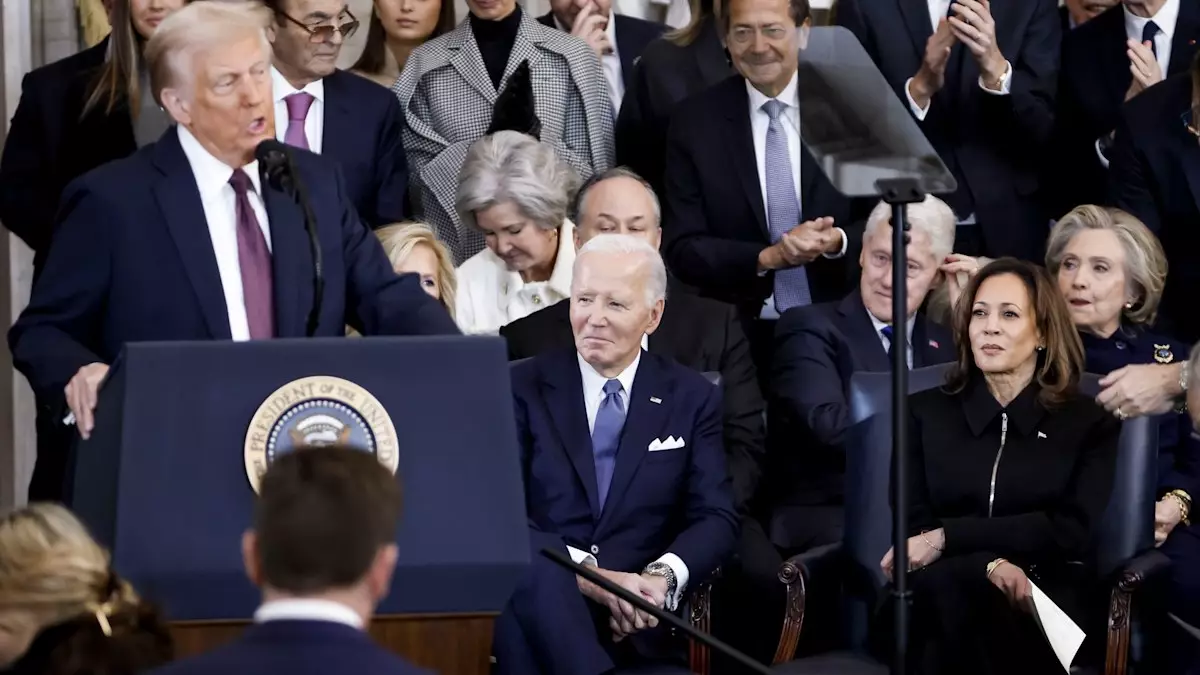In an event steeped in political tension and fervor, Donald Trump’s inauguration speech carved a distinct narrative that resonated deeply with his supporters while simultaneously drawing ire from his opposition. The moment was not merely a ceremonial handover of power, but a stage for Trump to reiterate his vision for America amidst a backdrop of hostility marked by recent political events, including a shooting incident targeting him. This article delves into Trump’s noteworthy rhetoric, his striking criticisms of the Biden administration, and the implications of his policy promises for the future of American governance.
From the outset, Trump’s address was characterized by an unyielding tone of defiance. He pointedly criticized Joe Biden’s capability to lead, asserting that his rival could not even “manage a simple crisis at home.” In a highly charged setting, Trump’s barbs were meant to draw a clear contrast between his leadership and that of his predecessor. The palpable tension was highlighted by the physical presence of Biden and Vice President Kamala Harris, who refrained from clapping during pivotal moments of Trump’s speech — a symbolic rejection of his rhetoric. This moment encapsulated the divides that have come to define contemporary American politics and set the stage for a contentious relationship moving forward.
At the heart of Trump’s address was a narrative of betrayal and struggle. He claimed that his reelection stood as a “mandate” to rectify the perceived wrongs of his predecessor’s tenure, declaring, “We will immediately restore the integrity, competency, and loyalty of America’s government.” This rhetoric not only reinforced his promises to his base but also painted a post-COVID America as one in dire need of restoration. Such language served to galvanize his supporters by portraying them as champions of patriotism against a perceived internal betrayal from leaders who failed to uphold their vision for America.
The reference to being previously targeted by an assassination attempt further fueled Trump’s narrative of personal sacrifice and divine intervention, framing his presidency as part of a moral crusade to “make America great again.” This resonated deeply with those who view Trump as a fighter against corruption and decay, illustrating how personal challenges can be wielded skillfully to strengthen political legitimacy.
Subsequent to his confrontational tone, Trump pivoted to elaborate on the sweeping policy agendas he promised to implement. His ambitious plans featured a hardline approach to immigration, a call for regaining control of the Panama Canal, and a declaration of a “national energy emergency.” Each of these points was intended to chart a path towards what he termed a “golden age” for America.
Trump’s vision hinged on restoring American strength and pride, declared through phrases of empowerment and exceptionalism. He cited a future where America would once again be admired globally, signaling a departure from his predecessors’ diplomatic strategies that he characterized as weak. His approach to foreign relations suggested a unilateral stance, wherein America would not only lead but dictate terms, indicative of an isolationist philosophy that could redefine global alliances.
As Trump’s address drew to a conclusion, he painted vivid imagery of a nation reborn. He proclaimed a united America where compassion and courage lead the way, while simultaneously promising to confront aggressors with unyielding strength. His assertion that, “We will not be conquered. We will not be intimidated,” reinforced the lingering themes of resilience and sovereignty, speaking directly to his base who values national pride and security above all.
However, this vision raises questions about feasibility and its reception among a deeply fragmented populace. While some may be eager to embrace a return to robust nationalism, others might find this rhetoric divisive, potentially exacerbating the current polarization in American politics.
In this inaugural address, Trump not only sought to reaffirm his position but simultaneously challenged the current political landscape with assertive, sometimes inflammatory rhetoric. Whether this vision will culminate in tangible outcomes remains to be seen, yet it undoubtedly sets the stage for the impending debates, decisions, and the overall trajectory of American policy in the years to come.


Leave a Reply